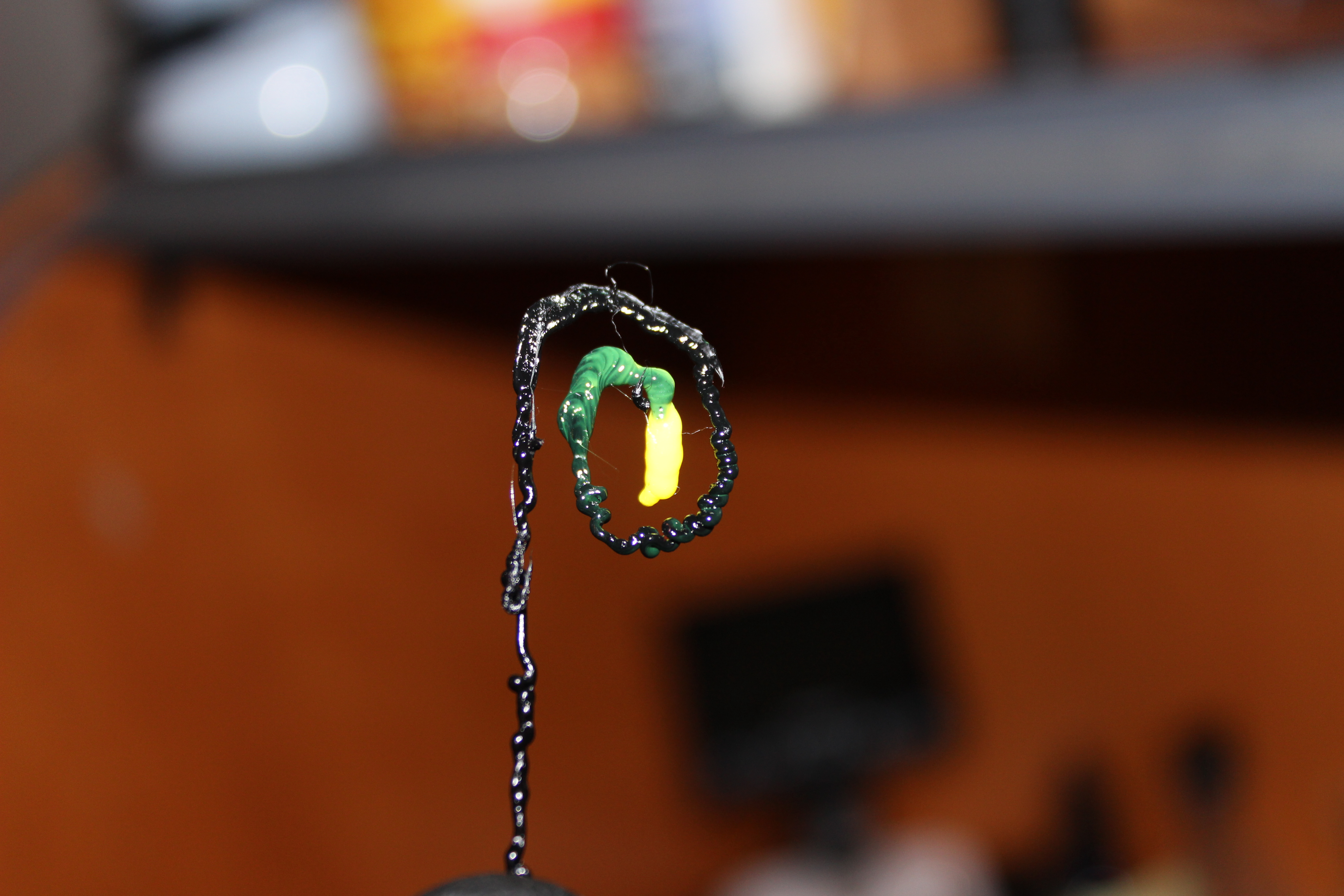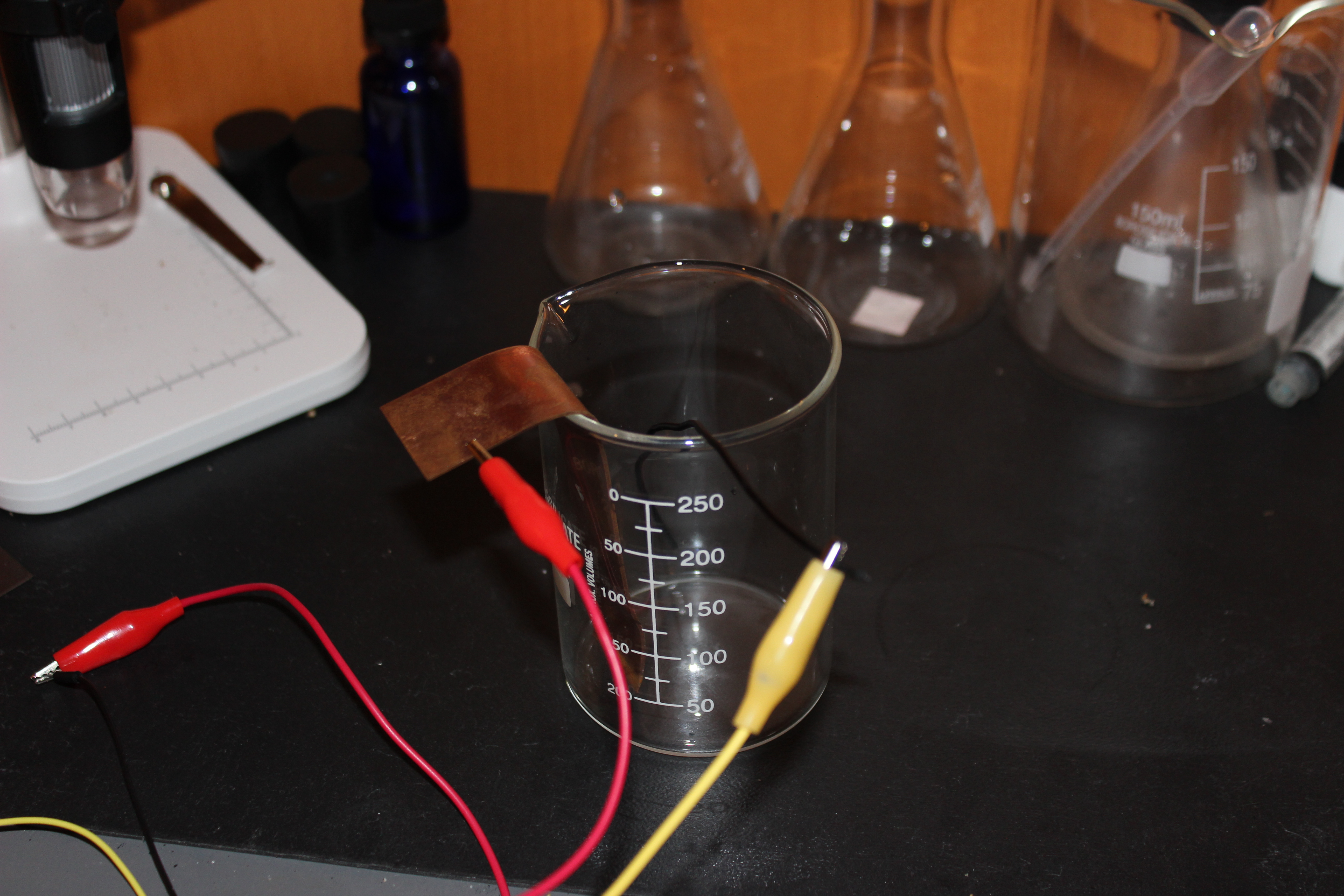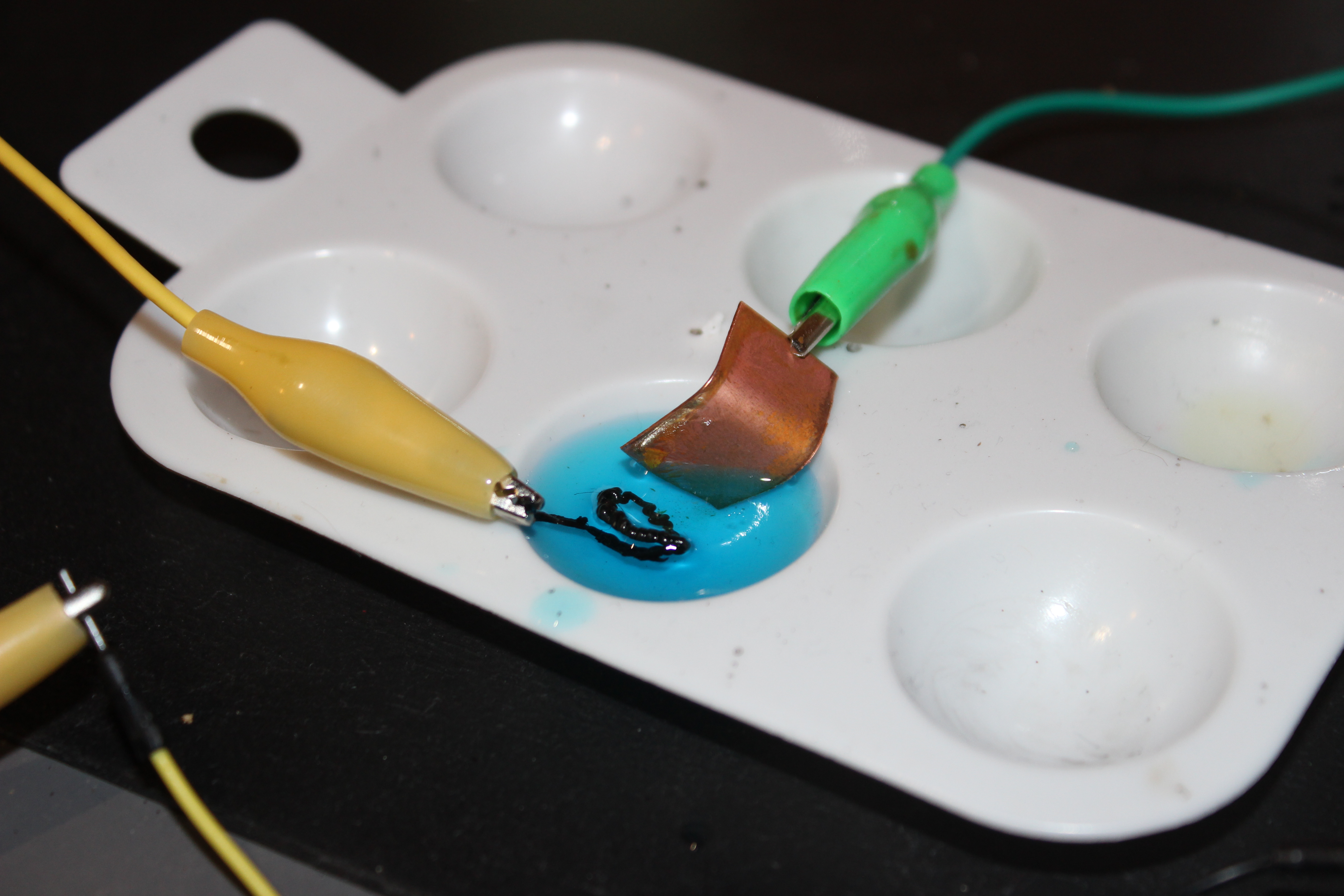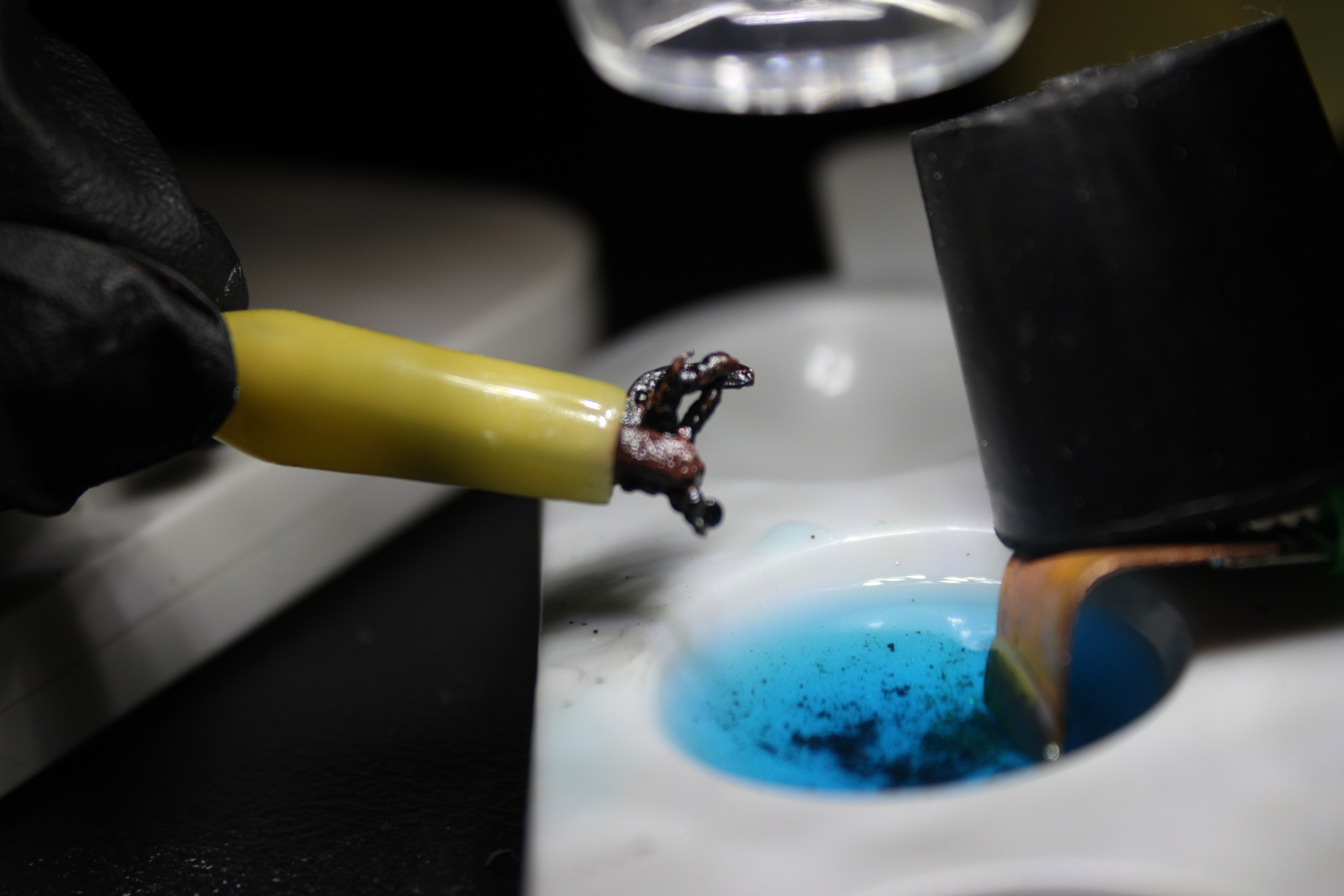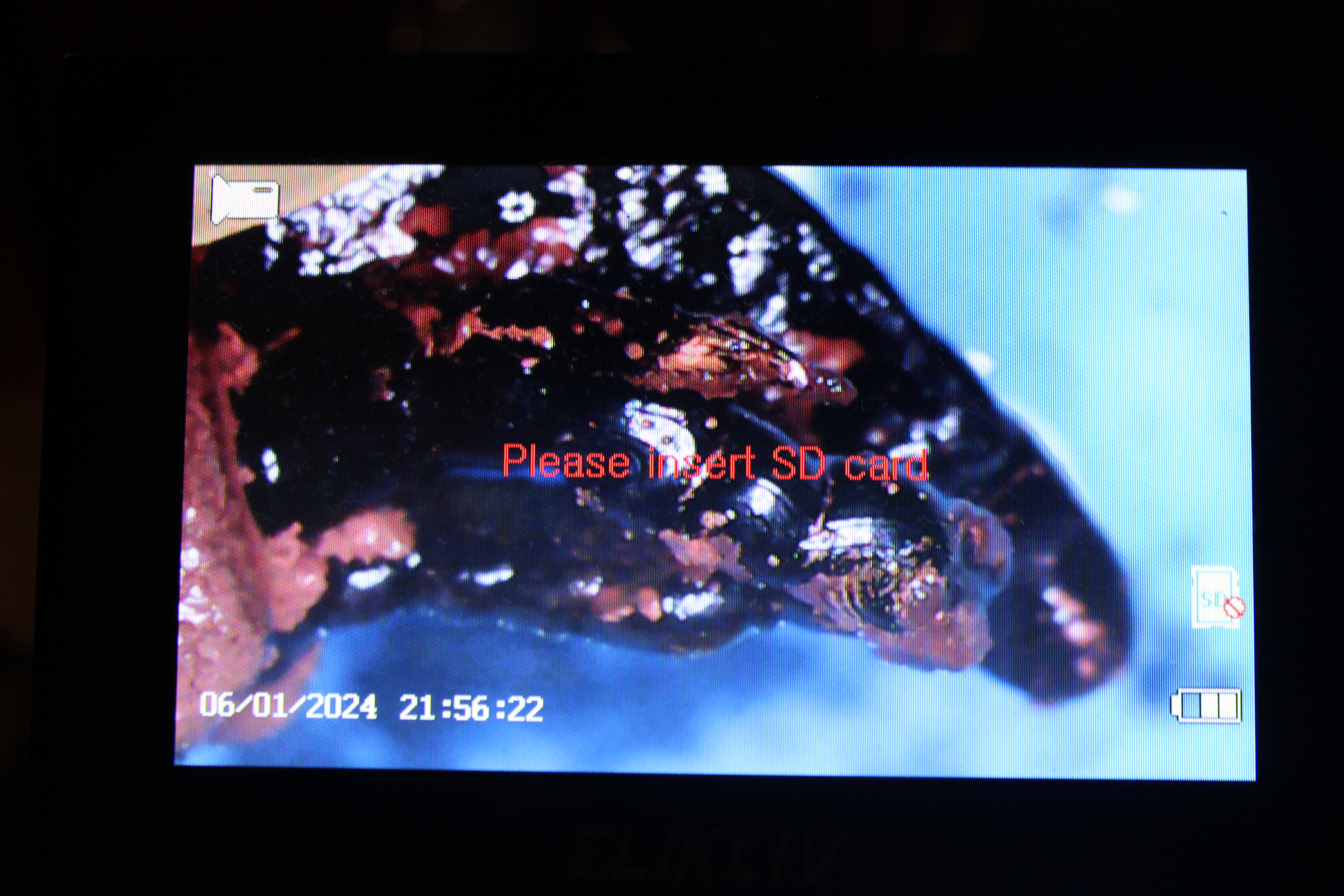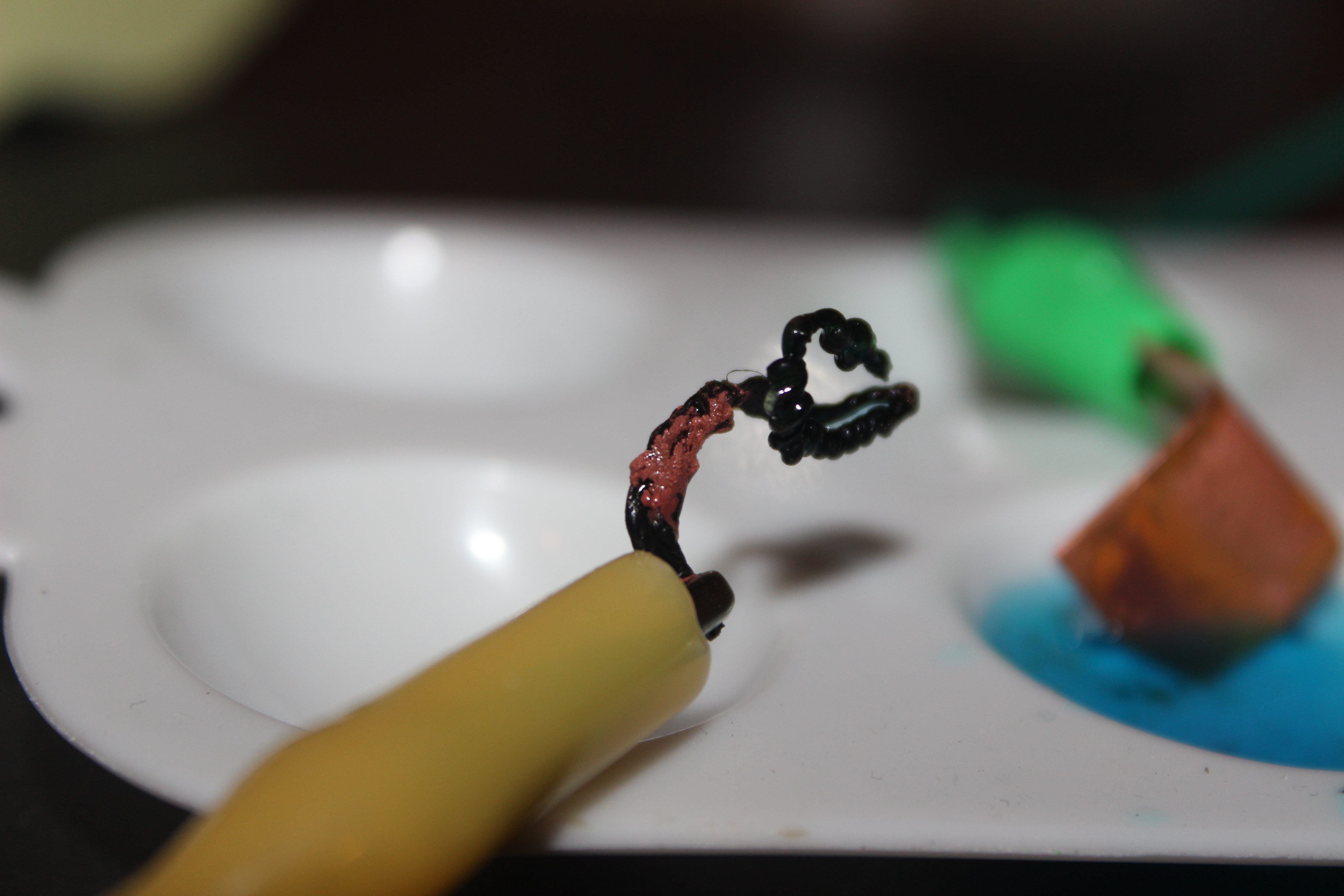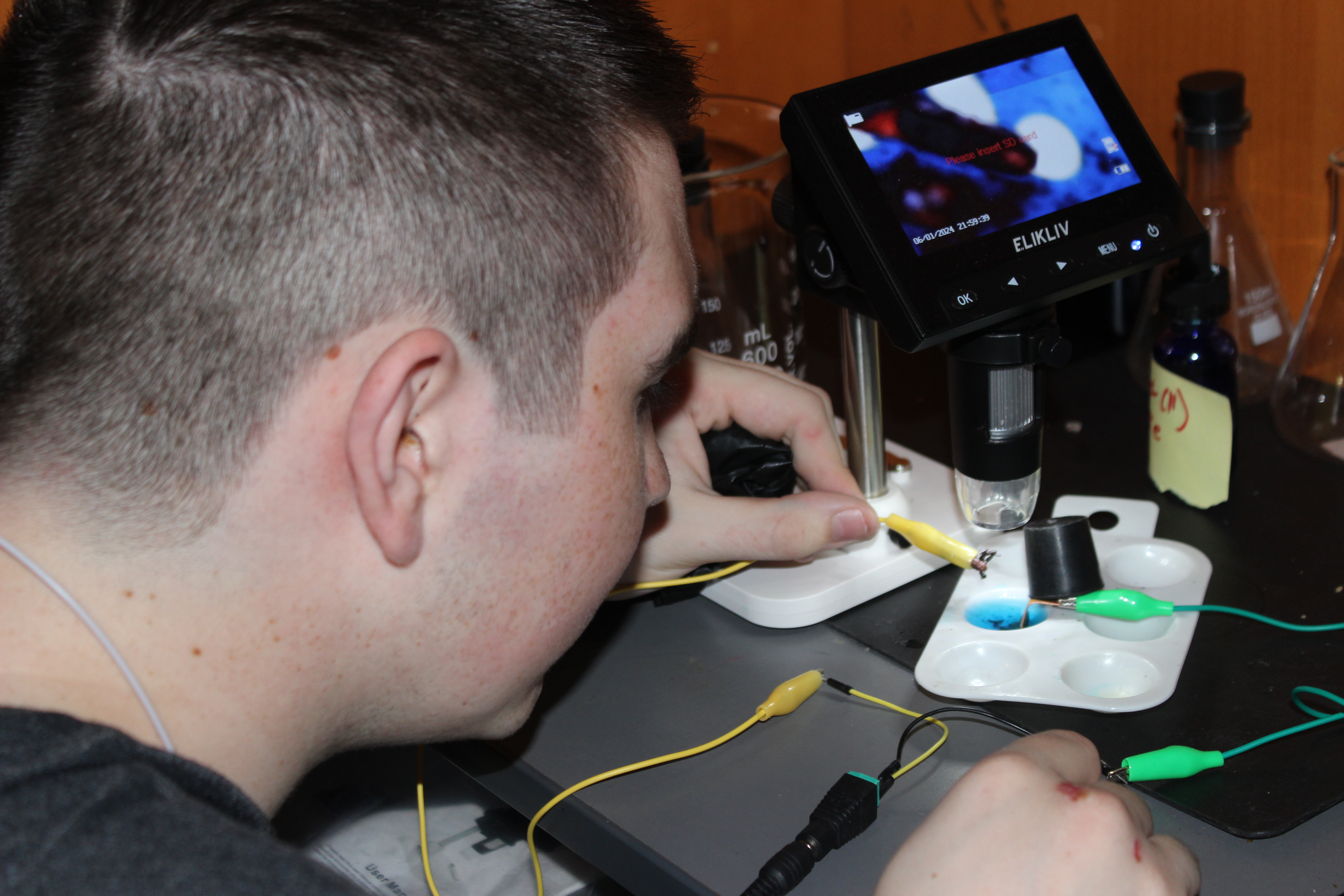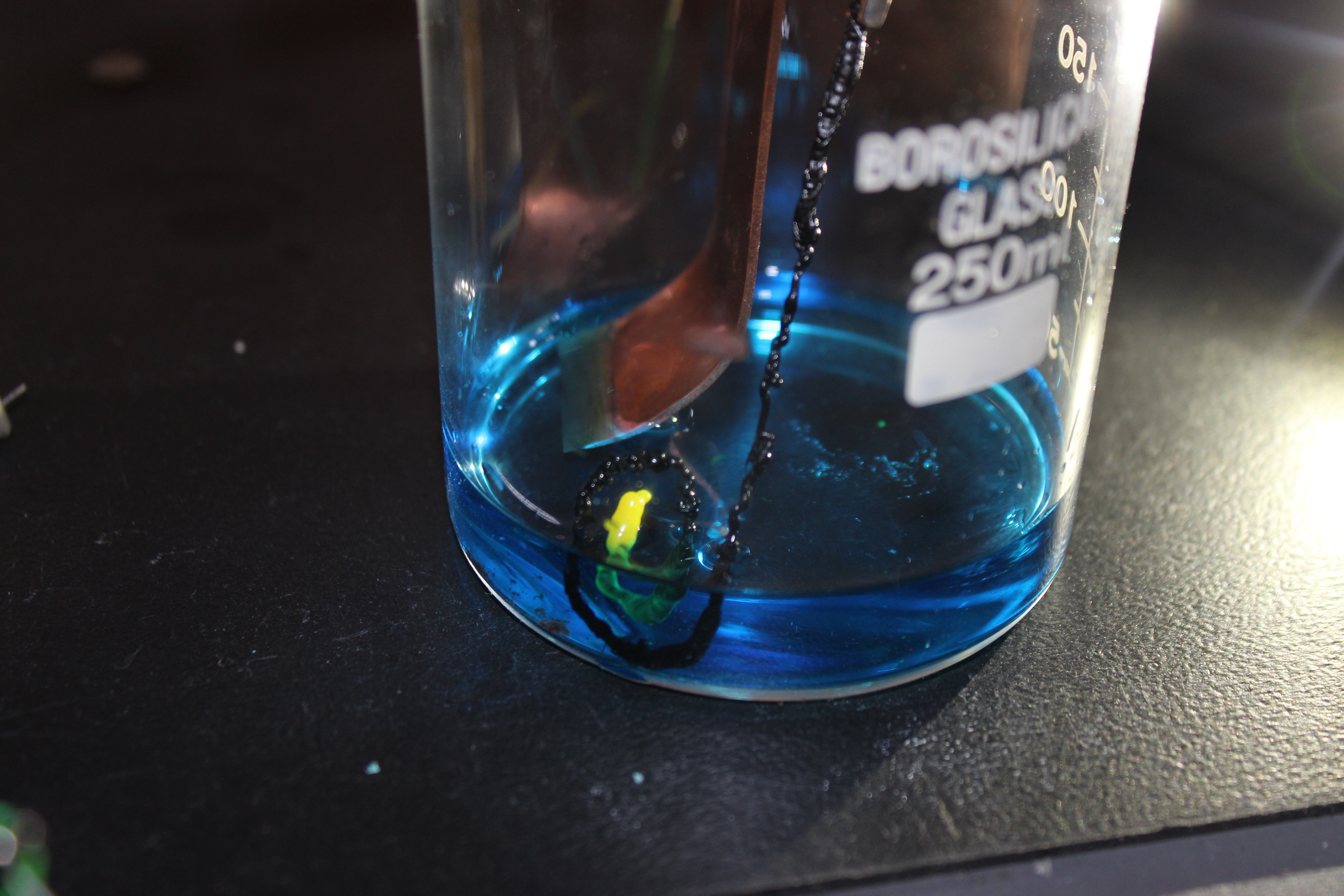
Initial test
For the initial test I used conductive filament as the cathode (see part 1) in order to try and get a deposition of copper onto the filament. The reason I am trying to do this is for future application in 3d printing projects to allow for the creation of PCB like systems.
This initial test was a failure and after a lot of research and testing of the system with a multimeter, I believe it was due to the extreme resistance of the conductive filament. This lead to very little power reaching the area that was in the solution and therefore no copper deposition.
